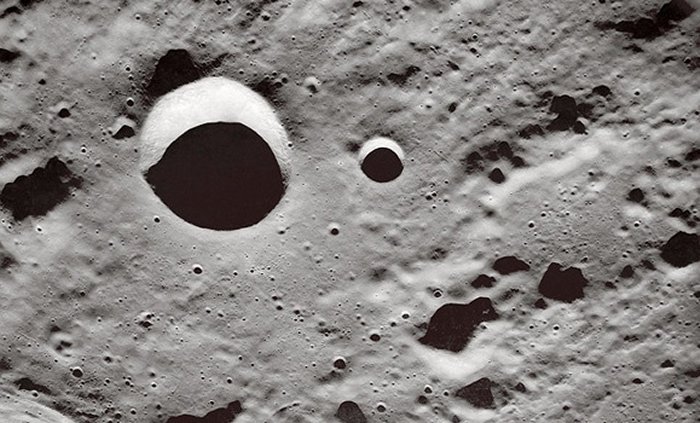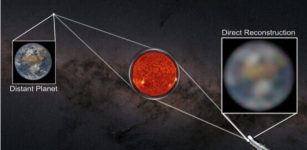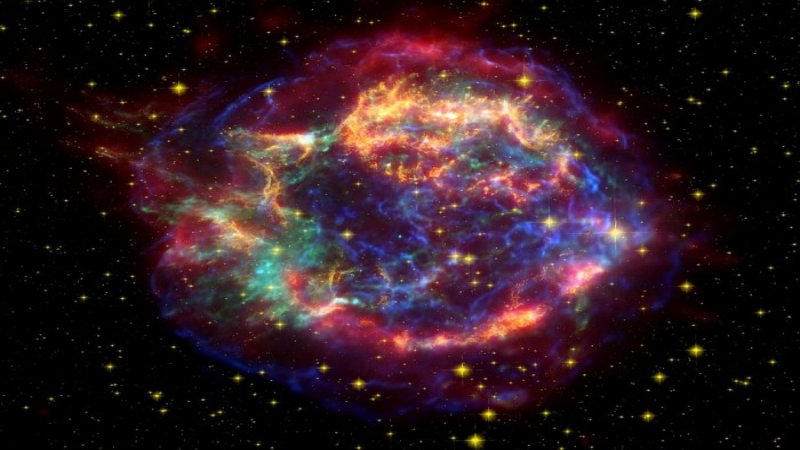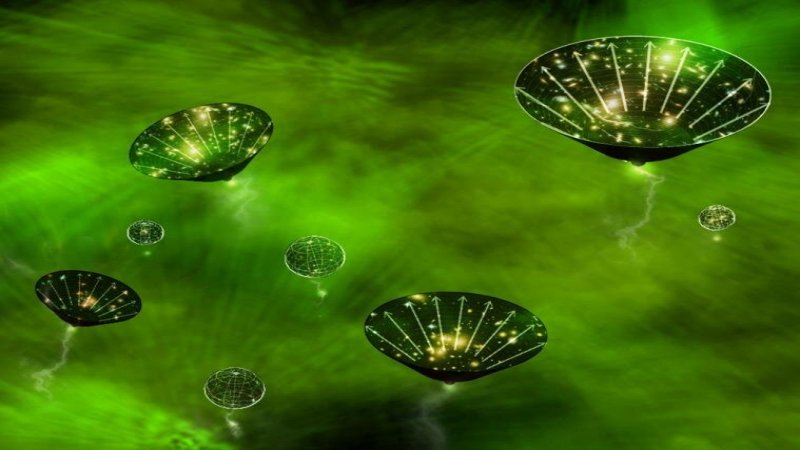Precious Metals May Be Locked Deep Below The Moon’s Surface – New Study
Eddie Gonzales Jr. – MessageToEagle.com – A repository of precious metals may be locked deep below the moon’s surface, researchers say, who were able to draw parallels between mineral deposits found on Earth and the moon.
“We have been able to link the sulfur content of lunar volcanic rocks to the presence of iron sulfide deep inside the moon,” James Brenan, a professor at the Department of Earth and Environmental Sciences at Dalhousie and lead author of the study, Dr. Brenan, said in a press release.
 This oblique view of the moon’s surface photographed by the Apollo 10 astronauts in May 1969. Image credit: NASA
This oblique view of the moon’s surface photographed by the Apollo 10 astronauts in May 1969. Image credit: NASA
“Examination of mineral deposits on Earth suggests that iron sulfide is a great place to store precious metals, like platinum and palladium.”
Early measurements of the precious metal concentrations in lunar volcanic rocks done in 2006, however, showed unusually low levels, raising a question that has perplexed scientists for more than a decade as to why there was so little.
Dr. Brenan says it had been thought that those low levels reflected a general depletion of the precious metals in the moon as a whole.
“Our results show that sulfur in lunar volcanic rocks is a fingerprint for the presence of iron sulfide in the rocky interior of the moon, which is where we think the precious metals were left behind when the lavas were created,” he says.
Researchers measured the composition of the resulting rock and iron sulfide and confirmed that the precious metals would be bound up by the iron sulfide, making them unavailable to the magmas that flowed out onto the lunar surface.
There was likely not enough to form an ore deposit, but certainly enough to explain the low levels in the lunar lavas,” Brenan said. However, samples from the deep, rocky part of the moon where the lunar lavas originated, are necessary to confirm the recent findings.
Geologists have access to scientific samples from hundreds of kilometers deep inside the Earth, but such material has not yet been recovered from the moon.
“We have been scouring the Earth’s surface for a fairly long period of time, so we have a pretty good idea of its composition, but with the moon that’s not so at all,” he said.
“We have a grand total of 400 kilograms of the sample that was brought back by the Apollo and lunar missions… it’s a pretty small amount of material. So, in order to find out anything about the interior of the moon we have to kind of reverse engineer the composition of the lavas that come onto the surface.”
Remote sensing by satellites suggests there may be outcroppings of the deeper parts of the moon, revealed after massive impacts formed the Schrödinger and Zeeman craters in the South Pole Aitken basin.
“It’s pretty exciting to think that we might return to the moon,” says Dr. Brenan. “And if so, the South Pole seems like a good choice for sampling.”
Written by Eddie Gonzales Jr. – MessageToEagle.com Staff
Related Posts
-
 Scientists Describe A Gravity Telescope That Could Image Exoplanets
No Comments | May 5, 2022
Scientists Describe A Gravity Telescope That Could Image Exoplanets
No Comments | May 5, 2022 -
 Supernova Explosions Classified By AI With Unprecedented Accuracy
No Comments | Dec 25, 2020
Supernova Explosions Classified By AI With Unprecedented Accuracy
No Comments | Dec 25, 2020 -
 Mysteriously Long, Thin Cloud Again Visible Over Arsia Mons Volcano On Mars – A Study
No Comments | Mar 15, 2021
Mysteriously Long, Thin Cloud Again Visible Over Arsia Mons Volcano On Mars – A Study
No Comments | Mar 15, 2021 -
 New Record: Hottest Dying White Dwarf Identified At The Outskirts Of The Milky Way
No Comments | Nov 26, 2015
New Record: Hottest Dying White Dwarf Identified At The Outskirts Of The Milky Way
No Comments | Nov 26, 2015 -
 Farthest Galaxy Candidate Yet Known Discovered By James Webb Space Telescope
No Comments | Nov 30, 2022
Farthest Galaxy Candidate Yet Known Discovered By James Webb Space Telescope
No Comments | Nov 30, 2022 -
 Many Planets Could Have Atmospheres Rich In Helium – New Study
No Comments | Nov 22, 2022
Many Planets Could Have Atmospheres Rich In Helium – New Study
No Comments | Nov 22, 2022 -
 Hubble Finds A Protoplanet That Could Upend Planet Formation Models
No Comments | Apr 4, 2022
Hubble Finds A Protoplanet That Could Upend Planet Formation Models
No Comments | Apr 4, 2022 -
 Gigantic Super-Remnant In The Andromeda Galaxy – First Evidence Discovered
No Comments | Feb 19, 2019
Gigantic Super-Remnant In The Andromeda Galaxy – First Evidence Discovered
No Comments | Feb 19, 2019 -
 Search For Dark Matter And Primordial Black Holes From Early Universe
No Comments | Dec 30, 2020
Search For Dark Matter And Primordial Black Holes From Early Universe
No Comments | Dec 30, 2020 -
 Cassini Data Suggests Saturn’s Rings Are As Old As Solar System Itself
No Comments | Sep 18, 2019
Cassini Data Suggests Saturn’s Rings Are As Old As Solar System Itself
No Comments | Sep 18, 2019
